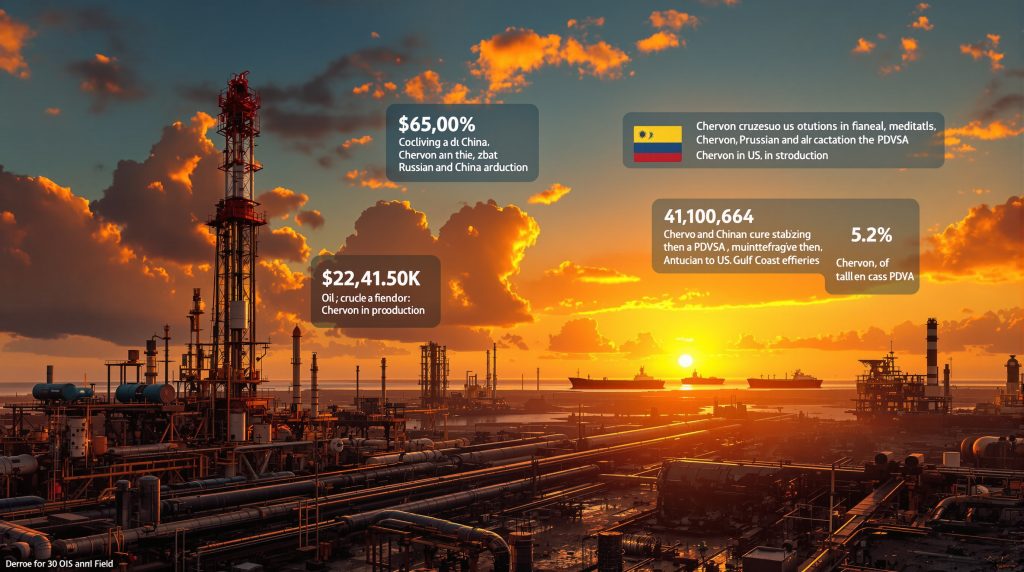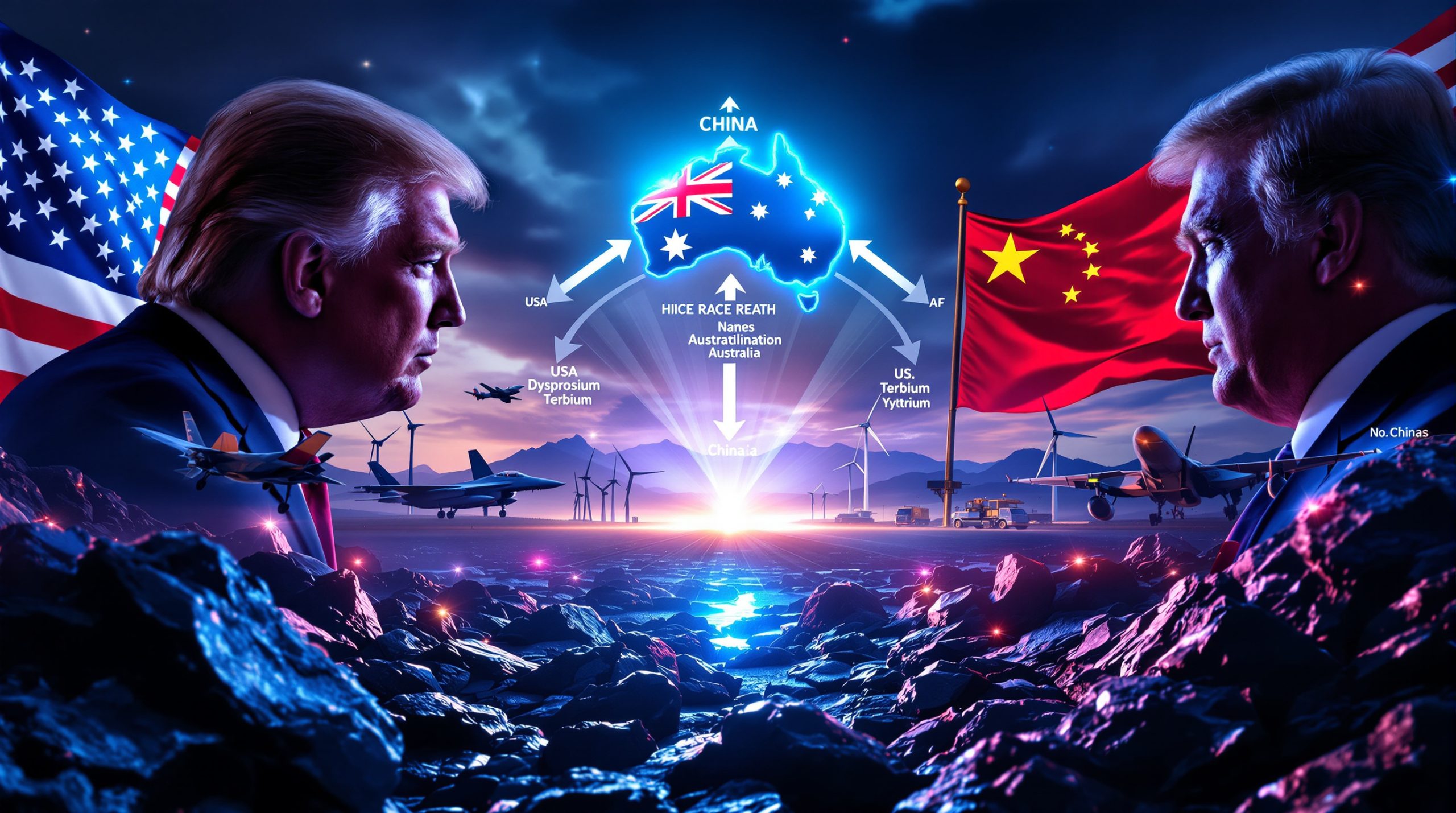Chevron's Return to Venezuela: Geopolitical Challenges and Oil Market Implications
The reentry of Chevron into Venezuela marks a significant shift in U.S. energy policy toward the oil-rich South American nation. After years of sanctions that effectively blocked American companies from operating in Venezuela, the U.S. Treasury Department issued a restricted license in mid-2025 allowing Chevron to resume limited operations. This policy reversal reflects a complex calculation balancing geopolitical concerns, energy security interests, and economic pragmatism.
The license permits Chevron to extract and export Venezuelan crude without making direct payments to the Venezuelan government, creating a carefully calibrated mechanism that allows for commercial activity while maintaining pressure on the Maduro regime. This delicate balance highlights the ongoing tension between U.S. foreign policy objectives and energy market realities.
How Did U.S. Sanctions Impact Venezuela's Oil Industry?
The impact of U.S. sanctions on Venezuela's oil sector has been profound and multifaceted. When the Trump tariff policies first imposed comprehensive sanctions in 2019, Venezuela's oil production plummeted from over 1.5 million barrels per day to approximately 700,000 barrels per day within a year.
The sanctions effectively:
- Cut off Venezuela from its primary export market in the United States
- Prevented international oil companies from investing in maintenance and development
- Limited access to specialized equipment and technical expertise
- Forced PDVSA to sell crude at steep discounts to willing buyers like China
- Accelerated the deterioration of Venezuela's oil infrastructure
This dramatic decline transformed Venezuela from one of the world's leading oil exporters to a struggling producer, despite possessing the largest proven oil reserves globally. The sanctions created a vacuum that was partially filled by Chinese, Russian, and Iranian interests, who gained increasing influence in Venezuela's energy sector during the U.S. absence.
What Are the Terms of Chevron's Current License?
The restricted license granted to Chevron in July 2025 contains several key provisions that distinguish it from normal commercial operations:
License Restrictions
- Duration: Six-month term with potential for renewal
- Payment Structure: Prohibits direct payments to PDVSA or the Venezuelan government
- Revenue Allocation: Allows Chevron to recoup past debts and operational costs
- Operational Scope: Limited to existing joint ventures with PDVSA
- Export Destinations: Primarily focused on supplying U.S. Gulf Coast refineries
Unlike previous licenses, the current authorization is not publicly disclosed in detail, suggesting a more flexible approach that allows for diplomatic adjustments without public scrutiny. The license effectively creates a financial firewall between Chevron's operations and the Venezuelan government, allowing oil to flow while maintaining sanctions pressure.
How Has Venezuela's Oil Production Evolved During Sanctions?
Venezuela's oil production trajectory has been marked by dramatic decline followed by modest stabilization and recovery efforts:
| Period | Average Production | Key Developments |
|---|---|---|
| Pre-2019 | 1.5+ million bpd | Venezuela was a major global oil exporter |
| 2019-2022 | 500,000-700,000 bpd | Severe decline following comprehensive sanctions |
| 2023-2024 | 700,000-900,000 bpd | Limited recovery under initial Chevron license |
| Early 2025 | ~900,000 bpd | Production gains before license revocation |
| Mid-2025 | ~800,000-1.1 million bpd | Stabilization despite Chevron's temporary absence |
Surprisingly, Venezuela maintained relatively stable production during Chevron's brief absence in mid-2025, largely due to increased Chinese purchases and technical assistance from Russian and Iranian entities. This resilience suggests that while Chevron's expertise is valuable, Venezuela has developed alternative partnerships to sustain basic operations.
What Are the Economic Benefits of Chevron's Return?
The economics of Chevron's Venezuelan operations present a compelling business case despite the political complications:
For Chevron:
- Access to heavy crude at production costs of $30-35 per barrel, well below market prices
- Utilization of specialized Gulf Coast refineries designed for processing heavy Venezuelan crude
- Recovery of billions in outstanding debts from PDVSA
- Maintenance of a strategic position in one of the world's largest oil reserves
- Potential for expanded operations if political conditions improve
For U.S. Refiners:
- Supply of heavy crude ideally suited for complex Gulf Coast refineries
- Partial replacement for declining Mexican heavy oil exports
- Reduction in reliance on Canadian oil sands crude, which often commands higher prices
- Diversification of heavy crude sources beyond politically sensitive regions
The arrangement also allows Chevron to distribute Venezuelan crude to other U.S. refiners, with recent shipments directed to Valero's facilities in Port Arthur and Port Charles, creating a wider economic benefit within the U.S. refining sector.
What Challenges Does Chevron Face in Venezuela?
Despite the economic rationale, Chevron's operations in Venezuela face substantial challenges that create significant business uncertainty:
Political Volatility
- Unpredictable U.S. policy shifts with each administration change
- Ongoing tensions between Washington and Caracas
- Risk of license revocation during political disputes
- Uncertainty surrounding Venezuela's 2025 political landscape
Operational Constraints
- Deteriorated infrastructure requiring significant investment
- Limited access to diluents needed for heavy crude processing
- Reliance on Russian naphtha imports for blending operations
- Workforce challenges after years of industry exodus
Competitive Pressures
- Chinese companies have established strong positions during U.S. absence
- Russian and Iranian technical assistance has created alternative partnerships
- PDVSA has developed workarounds to sanctions that may compete with Chevron
These challenges create a precarious operating environment where commercial considerations are consistently subordinated to geopolitical calculations, making long-term planning particularly difficult.
How Does China Factor Into Venezuela's Oil Equation?
China has emerged as Venezuela's most important oil customer and economic partner during the sanctions era:
- Chinese refineries currently purchase 85-90% of Venezuela's oil exports
- Chinese companies have provided technical assistance and equipment
- Chinese loans have helped sustain Venezuela's economy
- Chinese refineries are specifically configured to process Venezuelan heavy crude
This relationship has provided Venezuela with an economic lifeline while giving China preferential access to discounted heavy crude. The US–China trade tensions and tariffs on countries purchasing Venezuelan oil were widely interpreted as targeting this China-Venezuela energy relationship, adding another layer of geopolitical complexity.
For Chevron, China's established position presents both a challenge and an opportunity. While Chinese buyers have secured a dominant market position, their presence has helped maintain basic production capabilities that Chevron can now leverage. However, any significant expansion of Chevron's role would likely come at the expense of Chinese interests, creating potential for additional friction.
What Does Chevron's Return Mean for Venezuelan Oil Infrastructure?
Venezuela's oil infrastructure has suffered severe deterioration during the sanctions period, with limited maintenance and investment creating numerous operational challenges:
- Production facilities operating well below designed capacity
- Pipeline systems suffering from corrosion and lack of maintenance
- Export terminals requiring significant upgrades
- Refining capacity severely diminished from historical levels
According to Reuters, Chevron's return provides an opportunity for targeted infrastructure improvements, particularly in its joint ventures. The company's technical expertise and access to specialized equipment could help reverse some of the decline, though comprehensive rehabilitation would require a broader political settlement and lifting of sanctions.
A particular focus has been on facilities supporting heavy crude production and blending, including:
- Upgraders that convert extra-heavy crude to more marketable grades
- Blending facilities that mix heavy crude with diluents
- Storage and transportation infrastructure for handling viscous oil
These specialized facilities are critical to monetizing Venezuela's vast Orinoco Belt resources, which constitute the majority of the country's reserves but require significant processing to be marketable.
What Role Do Diluents Play in Venezuelan Oil Exports?
The technical characteristics of Venezuelan crude create specific operational requirements that impact Chevron's operations:
Diluent Dynamics
- Much Venezuelan crude is extremely heavy (below 10° API gravity)
- Heavy crude requires blending with lighter products to flow through pipelines
- Naphtha is the primary diluent used to create exportable blends
- Diluent imports directly correlate with export potential
The source of these diluents has shifted significantly during the sanctions period. Before 2025, most diluents came from the United States, but Russia has now emerged as the primary supplier. This shift highlights the geopolitical realignment of Venezuela's oil sector and creates additional complications for Chevron's operations.
The company's cautious approach to supplying its own naphtha, unlike in pre-2025 operations, suggests uncertainty about the longevity of the current arrangement. This hesitancy reflects the broader political risk that continues to overshadow commercial considerations in Venezuela's oil sector.
What Is the Future Outlook for Chevron in Venezuela?
The sustainability of Chevron's presence in Venezuela depends on several interconnected factors:
Political Variables
- U.S. policy continuity across administrations
- Venezuela's domestic political developments
- U.S.-China relations and their impact on energy policy
- Regional geopolitical considerations
Economic Factors
- Global oil price environment
- Investment requirements for infrastructure rehabilitation
- Competition from alternative heavy crude sources
- U.S. Gulf Coast refining demand patterns
Technical Considerations
- Ability to arrest decline rates in mature fields
- Success in addressing infrastructure limitations
- Access to necessary equipment and expertise
- Environmental challenges in heavy oil production
In the near term, Chevron's return to Venezuela will likely continue under the restricted license framework, with modest production increases possible as operational efficiencies improve. However, any transformative expansion would require a more comprehensive political settlement that appears unlikely in the current environment.
The company's strategy appears focused on maintaining its position while awaiting more favorable conditions, effectively preserving optionality in one of the world's largest oil reserves despite the significant political complications.
How Does Venezuela's Oil Future Impact Global Markets?
Venezuela's potential return as a major oil producer would have significant implications for global energy markets:
- Addition of heavy crude supply to a market currently facing relative scarcity
- Potential pressure on Canadian oil sands pricing and market share
- Reduced leverage for other heavy crude producers like Mexico and Colombia
- Altered trade flows as Venezuelan exports shift from Asia back to the Americas
However, the path to restored production faces substantial obstacles. Even with Chevron's involvement, Venezuela is unlikely to approach its historical production levels of 2-3 million barrels per day without comprehensive sanctions relief and massive investment. The more realistic medium-term scenario involves gradual increases toward 1.2-1.5 million barrels per day, contingent on political developments and investment conditions.
This constrained outlook means that while Venezuela remains relevant to global oil trade dynamics, particularly for specialized heavy crude refiners, its impact on overall market balances will likely remain limited in the near term. The primary significance lies in the geopolitical implications rather than immediate supply effects.
Conclusion: Politics Trumps Economics in Venezuela's Oil Sector
Chevron's return to Venezuela exemplifies how geopolitical considerations can override commercial logic in the energy sector. Despite compelling economics and clear mutual benefits, the company's operations remain hostage to political calculations in both Washington and Caracas.
The restricted license framework creates an inherently unstable arrangement where Chevron's presence depends on continuous political calculations rather than commercial viability. This uncertainty limits investment, constrains operational planning, and ultimately prevents Venezuela from leveraging its vast resources effectively.
For global oil markets, Venezuela represents both unrealized potential and a cautionary tale about the impact of geopolitical conflict on energy development. The country's vast reserves ensure it will remain relevant to global energy discussions, but the path to realizing that potential remains obstructed by political considerations that show little sign of resolution in the near term.
As OPEC production impact and U.S. tariffs and inflation continue to shape global markets, Chevron's experience highlights the challenges of operating at the intersection of commercial energy development and high-stakes international politics. The company's cautious approach reflects the reality that in Venezuela, politics consistently trumps economics in determining the trajectory of oil development.
Ready to Spot the Next Major Mineral Discovery?
Stay ahead of the market with Discovery Alert's proprietary Discovery IQ model, which instantly notifies investors of significant ASX mineral discoveries and transforms complex data into actionable insights. Visit the dedicated discoveries page to see why historic discoveries have generated substantial returns, and begin your 30-day free trial today.




